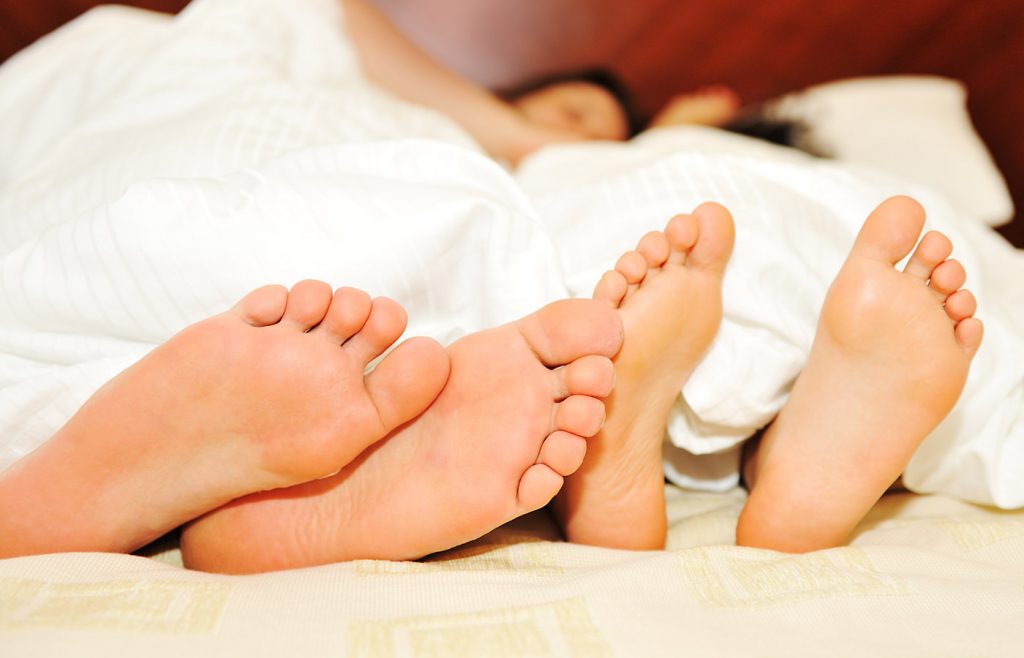
Sometimes the simple pleasures are the best ones: the rich smell of coffee, a great novel or movie—and, of course, a long and satisfying foot rub. With foot rubs, as with so many things in life, it just makes sense that something that feels so good should, in fact, be good for you. And according to reflexologists, having your piggies massaged by a professional may also effectively address many bothersome health complaints, from backaches to nervous tension.
Sound doubtful? Consider the evidence. In 2000, a University of Wisconsin School of Medicine study, for instance, found that reflexology was just as effective as nasal irrigation for the alleviation of chronic sinusitis. And that’s just the tip of the iceberg.
A long string of published studies have shown the simple yet powerful treatment to be helpful with conditions like acne, eczema, impotence, premenstrual syndrome, and even life-threatening diabetes. “Wonderful things happen with reflexology,” says Des Moines reflexologist Gloria K. Heaton, who once saw remarkable progress with a client who had asthma. “It took, oh, 12 weekly visits, and then her doctor said, ‘Your asthma’s cured!’”
Reflexology has been around for thousands of years. First practiced in ancient India, China, and Egypt, it was introduced to the West in 1913 by Dr. William Fitzgerald. The American ear, nose, and throat surgeon claimed that by applying pressure to specific parts of his patients’ bodies, he could create an anaesthetizing effect elsewhere in their bodies.
Fitzgerald then extended his theory. He divided the body into ten equal vertical zones, which ended in the fingers and toes, and he concluded that the application of pressure to one part of a zone would affect everything else within that zone. So the theory goes, applying pressure to specific reflex areas on the feet and hands creates a response in other areas and organs of the body within the same zone.
In the 1930s, therapist Eunice Ingham took the theory a notch further. Ingham noted that congestion or tension in any part of the foot mirrors congestion or tension in a corresponding part of the body. To treat the ailing body part, Ingham reasoned, one need only determine the corresponding “reflex point” on the foot and massage it. She carefully mapped out all the body’s reflex points on the foot, and modern reflexology was born.
James Kenneth Murphy, who’s been practicing reflexology in Mt. Pleasant, Iowa, for 30 years, explains it this way: “There is a nerve ending in your feet for every organ in your body. What you do is you stimulate the blood flow to the organ or area in trouble, and then nature takes over.”
So how exactly does a treatment work? It’s quite simple. Using only his or her hands as tools, a trained reflexologist will methodically knead your feet, working out any tensions that correspond to malaise in the body. Imbalances typically show up as localized stiffness, or crystal deposits, in the feet.
Often, a reflexologist will ask you up front about current health complaints, although the skilled can usually detect imbalances once they get their hands on your feet. Says Louros, “I’ll see something, and 95 percent of the time, it’s right.” Heaton agrees. “People are quite amazed sometimes when I tell them about things they haven’t told me,” she says.
Once the pesky crystal deposits are adequately “worked out,” according to Heaton, the corresponding physiological problems can be abated, or entirely relieved. “It’s quite remarkable,” she said.
The number of visits it takes to clear up crystal deposits and experience relief from symptoms strongly depends upon the nature of the client’s problem. Short-term problems like minor aches and pains often clear up quickly—“I’ve never had a patient leave the office with a headache,” says Heaton—and people usually experience some kind of relief within the first few visits. Long-term illnesses or conditions may take weeks or even months to address—if they can be helped at all. “I haven’t really seen it address weight loss, for instance,” said Heaton.
Heaton and Murphy are quick to point out that, because they are not doctors, they’re not officially permitted to diagnose or claim to offer cures. But while they agree that reflexology may not be effective in treating all maladies, they’re certainly not short on success stories.
“One man [with a herniated disk] came in leaning heavily on a cane,” recalls Heaton. “When he left, he tucked his cane under his arm and he up and walked out.” According to Heaton, reflexology is also the alternative “treatment of choice” for diabetics. “The pancreas starts working better, insulin levels normalize . . . if they’ve lost feeling in their feet, after four or so treatments, the feeling comes back, toenail growth normalizes.”
Reflexology sessions usually run from half an hour to an hour, depending upon the practitioner, and the cost of a treatment is about $30-40.
